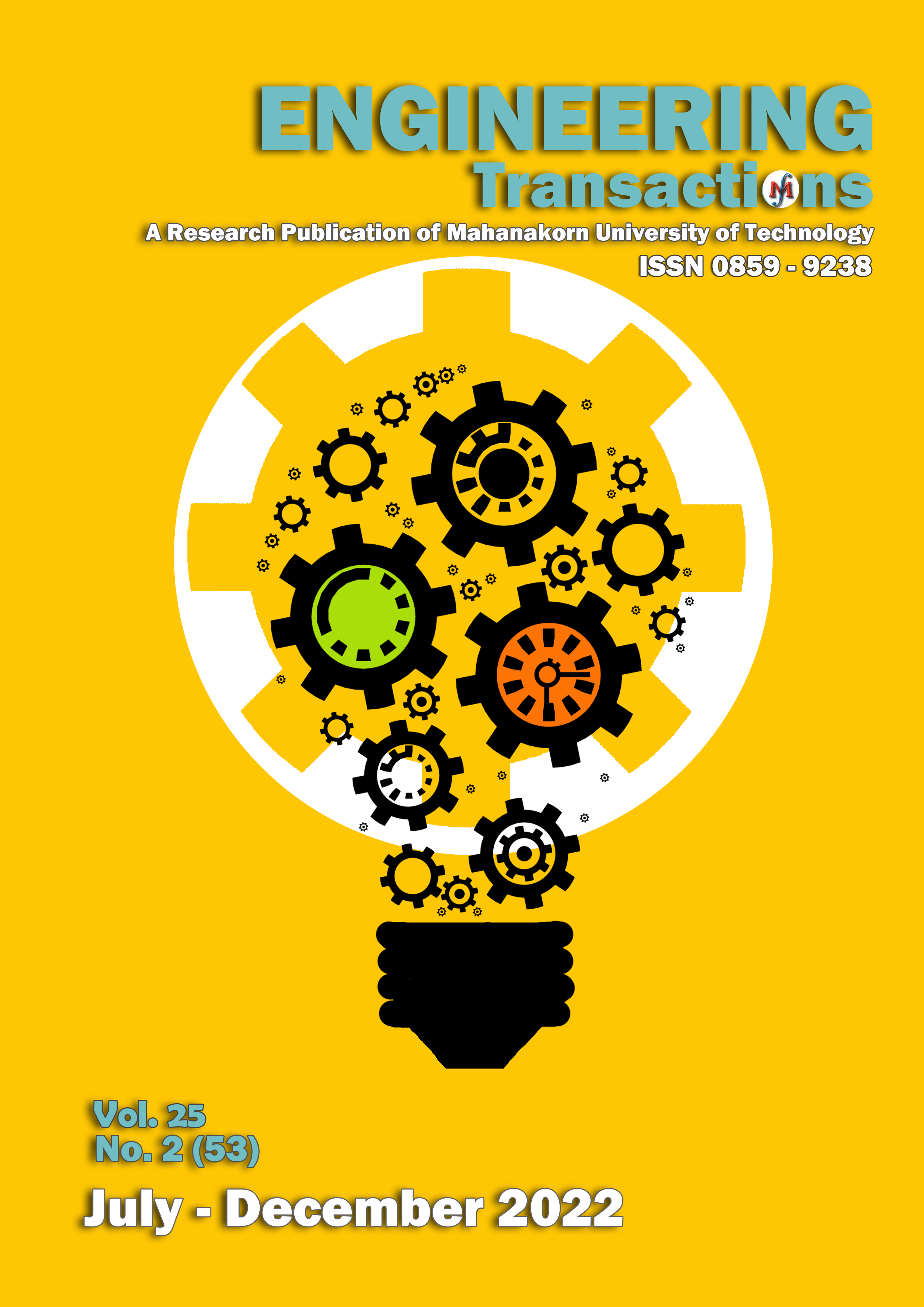Mahanakorn Satellite Receiving Station Part II: Practical Operations and On Going
Main Article Content
Abstract
Previously, the architecture and preliminary testing of MARS (Mahanakorn Satellite Receiving Station) were presented in Part-I article [1]. The real-time broadcasting images taken by Earth Observing Satellites (EOS) in LEO (Low Earth Orbit) were used for multiple purposes in GI (Geographic Information) applications. The continuing phase presented in this academic article is the practical operations of MARS and production of in-house GI. The MARS has capability to track and receive the series of NASA’s EOS and NOAA’s EOS. In the practical operations, several passed over Thailand of satellite images are used for disaster monitoring every year, and hotspots location which caused bushfire in the northern part. The GI products are posted on MUT facebook account for public services. Finally, on going work continue to extend the MARS capability, the C band antenna and SDR (Software Defined Receiver) will be installed and tested in near future for receiving images from geostationary satellite.
Article Details

This work is licensed under a Creative Commons Attribution-NonCommercial-NoDerivatives 4.0 International License.
Copyright @2021 Engineering Transactions
Faculty of Engineering and Technology
Mahanakorn University of Technology
References
S. Purivigraipong and S. Jatarang, “Mahanakorn Satellite Receiving Station Part I : System Architecture and Preliminary Results”, ENGINEERING TRANSACTIONS, vol. 22, no.1 (46), pp. 34 – 40, JAN-JUN 2019.
Geo-Informatics and Space Technology Development Agency, The World of Water, November 2012.
https://undubzapp.com/น้ำท่วมใหญ่-ในไทย/, “ย้อนรอยประวัติศาสตร์! 5 เหตุการณ์น้ำท่วมใหญ่ ที่คนไทยไม่มีวันลืม”, เผยแพร่เมื่อ 1 ตุลาคม 2564, สืบค้นเมื่อ 1พฤศจิกายน 2565
เรียนรู้ อยู่กับฝุ่น PM2.5, จุฬาลงกรณ์มหาวิทยาลัย, ตุลาคม 2563
https://tei.or.th/th/blog_detail.php?blog_id=70 “การจัดการและลดการเผาในพื้นที่เกษตรของประเทศไทย”, เผยแพร่เมื่อ 3 มีนาคม 2564, สืบค้นเมื่อ 15 ตุลาคม 2565.
A. Restas, “Drone Applications for Supporting Disaster Management”, World Journal of Engineering and Technology, vol.03, no.03, pp. 316-321, January 2015.
S. Gharbi, N. Zangar and N. Aitsaadi, “Overview: High Altitude Platform Network for Disaster and Crises Application”, in Proc. 2019 International Conference on Information and Communication Technologies for Disaster Management (ICT-DM), December 2019.
https://skywatch.com/5-benefits-of-using-satellite-imagery-over-drones/, “5 Benefits of Using Satellite Imagery Over Drones”, เผยแพร่เมื่อ 2563, สืบค้นเมื่อ 15 ตุลาคม 2565.
https://www.qognify.com/blog/the-difference-between-business-intelligence-and-actionable-intelligence/, “Actionable Intelligence”, เผยแพร่เมื่อ 14 ตุลาคม 2560, สืบค้นเมื่อ 15 ตุลาคม 2565.
S. Liangrocapart, S. Khetkeeree, and B. Petchthaweetham, “Thermal Anomaly Level Algorithm for Active Fire Mapping by Means of Sentinel-2 Data”, in Proc. The 17th International Conference on Electrical Engineering/ Electronics, Computer, Telecommunications and Information Technology (ECTI-CON 2020), Phuket, Thailand, June 24-27, 2020.


